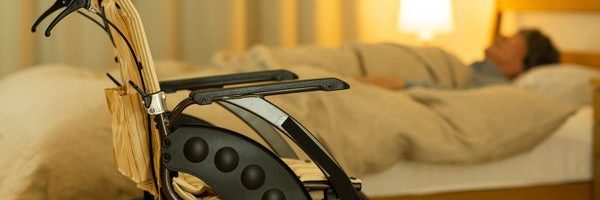When searching for a nursing home for your loved one, you look for a place that is safe and nurturing. One of the unfortunate realities in a nursing home is that sometimes the use of restraints is necessary for the safety of everyone. They can be used to protect residents from falls, elopements, and other dangers. However, restraints should always be used properly and only when absolutely necessary. An improper restraint can cause a resident to experience a serious injury.
Types of Restraints
There are two types of restraints that can be performed in a nursing home, chemical restraints and physical restraints. Chemical restraints involve the administration of medication that can calm a person down when they are agitated to a dangerous degree. Chemical restraints should only be administered in compliance with a doctor’s order. Physical restraints involve straps, belts, bedrails, other devices, and sometimes simply the hands of staff members. Any time a resident’s movement is restricted, it is considered a physical restraint.
Restraints are generally used to protect a resident from harm to themselves or others and should only be used after all other interventions have failed. They should only be used for a short period of time when other prevention and crisis management strategies have failed to address the issue. If a restraint is performed unnecessarily or improperly, it can result in injury to the resident.
Restraint Injuries
All staff should be properly trained on when and how to use restraints in a nursing home setting. When chemical restraints are inappropriately administered, it can result in respiratory and cardiac problems. In addition, physical restraints such as bedrails, if not correctly installed or monitored, can cause residents to become wedged between the rail and the bed leading to suffocation or other injuries. Physical restraints such as straps and belts, if not fitted as directed, can cause fractures, especially in fragile elderly residents. In some cases, physical restraints can lead to strangulation or death. Additionally, inhibiting a resident’s ability to move significantly increases the potential for bedsores to develop.
If your loved one has been injured during a nursing home restraint, there is a good possibility that there is negligence involved. It is important to consult with an attorney experienced in handling nursing home neglect cases. A thorough investigation will have to be conducted into the situation.
Contact a Trusted Attorney
If you or your loved one has been injured after a nursing home restraint, you should consult with an experienced and trusted attorney. At Bonina & Bonina, P.C., we have been helping the victims of nursing home neglect for over 50 years. Contact us online or call us at 1-888-MEDLAW1 to schedule your free consultation. Home and hospital visits are available. Se habla español.

